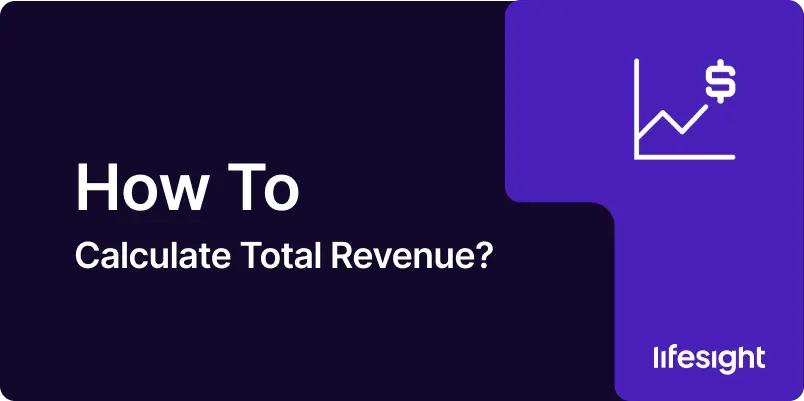
In the world of business and finance, few metrics are as fundamental and crucial as total revenue. Whether you’re a startup founder, a seasoned CFO, or a business analyst, understanding how to calculate and interpret total revenue is essential for making informed decisions and driving business growth. This guide will walk you through everything you need to know about total revenue, from basic calculations to advanced strategies for leveraging this metric in your financial analysis and business strategy.
What is Total Revenue?
Before we dive into the calculations, let’s define what we mean by total revenue:
Total revenue, often simply called revenue, is the total amount of income generated by a company from its primary business activities before any expenses or costs are deducted. It represents the “top line” of a company’s income statement and is a key indicator of a company’s financial health and market performance.
For business professionals and financial analysts, understanding total revenue is crucial because:
- It’s the foundation for calculating many other financial metrics
- It provides insights into a company’s market share and competitive position
- It’s essential for budgeting, forecasting, and strategic planning
- It helps in assessing the effectiveness of business strategies and marketing efforts
- It’s a key metric for investors and stakeholders when evaluating a company’s performance and growth potential
The Basic Formula for Calculating Total Revenue
The basic formula for calculating total revenue is straightforward:
Total Revenue = Price of Goods or Services x Quantity Sold
However, in practice, the calculation can become more complex depending on the nature of your business and the variety of products or services you offer.
Step-by-Step Guide to Calculating Total Revenue
Let’s break down the process of calculating total revenue with a practical example:
Step 1: Determine Your Calculation Period
First, decide on the timeframe for which you want to calculate total revenue. Common periods include:
- Monthly
- Quarterly
- Annually
For this example, let’s use quarterly data.
Step 2: Identify All Revenue Streams
List all the ways your company generates income from its primary business activities. This might include:
- Product sales
- Service fees
- Subscription revenue
- Licensing fees
Let’s say you run a software company with three main revenue streams:
- Software licenses
- Implementation services
- Maintenance and support contracts
Step 3: Gather Sales Data for Each Revenue Stream
Collect data on the quantity sold and price for each revenue stream:
- Software licenses: 100 licenses sold at $10,000 each
- Implementation services: 50 projects completed at an average of $20,000 each
- Maintenance and support: 500 contracts at $1,000 per quarter
Step 4: Calculate Revenue for Each Stream
Now, let’s apply our formula to each revenue stream:
Software licenses: 100 x $10,000 = $1,000,000 Implementation services: 50 x $20,000 = $1,000,000 Maintenance and support: 500 x $1,000 = $500,000
Step 5: Sum Up Total Revenue
Add up the revenue from all streams:
Total Revenue = $1,000,000 + $1,000,000 + $500,000 = $2,500,000
This means your total revenue for the quarter is $2,500,000.
Real-World Considerations in Total Revenue Calculations
While the basic calculation is straightforward, real-world scenarios often introduce complexities:
1. Multiple Product Lines or Services
If you offer various products or services at different price points, you’ll need to calculate revenue for each separately and then sum them up:
Total Revenue = (Price A x Quantity A) + (Price B x Quantity B) + (Price C x Quantity C) + …
2. Discounts and Promotions
Account for any discounts or promotional pricing:
Revenue = (Regular Price – Discount) x Quantity Sold
3. Returns and Refunds
Subtract the value of returns and refunds to get net revenue:
Net Revenue = Gross Revenue – Returns and Refunds
4. Recurring Revenue Models
For subscription-based businesses, consider Monthly Recurring Revenue (MRR):
MRR = Number of Subscribers x Monthly Subscription Price
5. Variable Pricing
If your pricing varies based on factors like customer size or usage, you may need to calculate revenue on a customer-by-customer basis.
Advanced Considerations in Total Revenue Analysis
As you become more proficient with basic total revenue calculations, consider these advanced concepts:
1. Revenue Recognition
Especially important for businesses with long-term contracts or subscription models, revenue recognition determines when revenue can be counted on the books. Familiarize yourself with accounting standards like ASC 606 for proper revenue recognition.
2. Segmented Revenue Analysis
Break down your revenue by different segments:
- Product lines or service types
- Geographic regions
- Customer segments (e.g., enterprise vs. small business)
- Sales channels (e.g., direct sales vs. partner sales)
This granular approach can reveal valuable insights about your business performance and growth opportunities.
3. Revenue per Employee
This metric can help assess operational efficiency:
Revenue per Employee = Total Revenue / Number of Employees
4. Revenue Growth Rate
Calculate how quickly your revenue is growing:
Revenue Growth Rate = (Current Period Revenue – Prior Period Revenue) / Prior Period Revenue
5. Seasonality Adjustments
If your business is seasonal, consider using moving averages or year-over-year comparisons to get a more accurate picture of revenue trends.
Common Pitfalls to Avoid
When working with total revenue calculations, watch out for these common mistakes:
- Including Non-Operating Income: Total revenue should only include income from primary business activities. Don’t include things like investment income or asset sales.
- Ignoring the Time Value of Money: For long-term contracts, consider the present value of future revenue.
- Misaligning Revenue and Expenses: Ensure you’re recognizing revenue in the same period as the associated expenses.
- Overlooking Deferred Revenue: For subscription or service businesses, be careful not to count deferred revenue prematurely.
- Neglecting to Account for Discounts and Returns: These can significantly impact your net revenue figure.
Tools for Total Revenue Analysis
Several tools can assist you in calculating and analyzing total revenue:
- Accounting Software: QuickBooks, Xero, or NetSuite can help track and calculate revenue across multiple streams.
- ERP Systems: SAP, Oracle, or Microsoft Dynamics often include robust revenue tracking and analysis features.
- Business Intelligence Tools: Tableau, Power BI, or Looker can help create dynamic dashboards for revenue analysis.
- Spreadsheet Software: Excel or Google Sheets are excellent for custom calculations and analysis, especially when dealing with complex revenue models.
- Revenue Operations Platforms: Tools like Clari or InsightSquared can provide advanced revenue analytics and forecasting capabilities.
Leveraging Total Revenue Data in Your Business Strategy
Understanding and effectively using total revenue data can significantly enhance your decision-making processes. Here’s how you can leverage this metric:
- Performance Evaluation: Use total revenue to assess the overall health of your business and the performance of different product lines or services.
- Goal Setting: Set realistic revenue targets based on historical data, market conditions, and growth strategies.
- Resource Allocation: Invest more in high-revenue products, services, or markets.
- Pricing Strategy: Analyze how changes in pricing affect overall revenue and profitability.
- Market Expansion: Identify high-revenue markets or segments for potential expansion.
- Forecasting: Use revenue trends to forecast future performance and inform strategic planning.
- Investor Relations: Use revenue data to communicate company performance and growth potential to investors and stakeholders.
Conclusion
Total revenue is more than just a number, it’s a key indicator of your company’s market position, growth trajectory, and overall financial health. By mastering the calculation and interpretation of total revenue, you equip yourself with a powerful tool to drive strategic decisions and fuel business growth.
Remember, while total revenue is a critical metric, it should be analyzed in conjunction with other financial indicators like profit margins, operating expenses, and cash flow. The most successful businesses take a holistic view of their financial performance, using total revenue as a starting point for deeper analysis and strategic planning.
As you continue to refine your approach to calculating and leveraging total revenue data, you’ll develop a more nuanced understanding of your business’s performance and potential. This knowledge will empower you to make more informed decisions, optimize your operations, and ultimately drive sustainable growth for your company.
So, the next time you’re assessing your company’s performance, planning for the future, or making a case for strategic investment, remember to dive deep into your total revenue data. It might just be the key to unlocking your next big business breakthrough!
Free essential resources for success
Discover more from Lifesight















